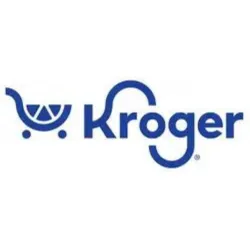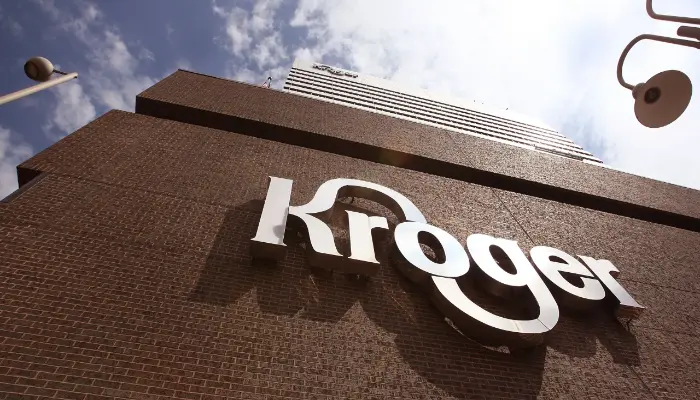Kroger, established in 1883 as a single grocery store in Cincinnati, Ohio, has evolved into a multifaceted retail giant, operating across various formats, including supermarkets, hypermarkets, convenience stores, and online platforms.
Over the years, Kroger has become a household name, serving millions of customers daily and establishing a significant presence in the U.S. retail sector.
Importance of Understanding Kroger’s Financial Worth
The financial health of Kroger holds paramount importance for a diverse range of stakeholders, including investors, employees, suppliers, and even the broader economy.
Investors seek to understand the company’s financial position for strategic investment decisions, while employees and suppliers depend on its stability for sustained partnerships and business relations.
A comprehensive analysis of Kroger’s financial worth provides valuable insights into its current standing, growth potential, and resilience amid industry challenges.
Purpose of the Financial Insight
- The purpose of this detailed financial insight is to offer a comprehensive and nuanced understanding of Kroger’s financial landscape.
- By delving into various facets such as historical background, financial metrics, market positioning, stock performance, and fundamental analysis, the goal is to equip investors and stakeholders with the knowledge necessary to make informed decisions.
- This insight aims to go beyond surface-level evaluations, providing an in-depth examination that considers both internal and external factors shaping Kroger’s financial worth.
Background of Kroger
Founding and History
- Kroger’s journey began modestly in 1883 when founder Bernard Kroger opened the first store, pioneering the concept of self-service shopping.
- A testament to resilience, Kroger expanded during challenging times, including the Great Depression, showcasing adaptability and strategic foresight.
Evolution of Kroger into a Retail Giant
- The evolution of Kroger from a regional grocery store to a national retail giant involves strategic acquisitions, mergers, and the embrace of innovative retail concepts.
- Acquiring diverse brands and entering new markets has been a key strategy, contributing to Kroger’s current expansive footprint.
Key Milestones in Kroger’s Journey
- Significant milestones, such as the introduction of the first supermarket, the implementation of data analytics for customer insights, and the expansion into online retail, highlight Kroger’s commitment to innovation and customer satisfaction.
- Understanding these milestones provides context to Kroger’s growth trajectory and strategic decisions.
Financial Metrics Overview
A. Importance of Financial Metrics
- Financial metrics serve as quantitative tools for assessing Kroger’s financial performance and health.
- These metrics provide a lens through which investors and stakeholders can gauge profitability, liquidity, and the overall financial stability of the company.
Key Financial Metrics to Evaluate Kroger’s Worth
- Revenue and Profit Margins
- Revenue, a key performance indicator, reflects the company’s ability to generate income. Analyzing profit margins provides insights into the efficiency of operations and cost management strategies.
- Earnings per Share (EPS)
- EPS is a critical metric, indicating the company’s profitability on a per-share basis. It is a fundamental measure for investors to evaluate the financial health and attractiveness of the stock.
- Price-to-Earnings (P/E) Ratio
- The P/E ratio compares the company’s stock price to its earnings per share. A higher P/E ratio may indicate higher growth expectations, while a lower ratio may suggest undervaluation.
- Debt-to-Equity Ratio
- The debt-to-equity ratio provides insights into the company’s financial leverage and risk. Balancing debt and equity is crucial for maintaining financial stability.
- Return on Equity (ROE)
- ROE assesses how effectively the company is utilizing shareholders’ equity to generate profits. It is a key indicator of management efficiency and profitability.
Comparison with Industry Standards
- Benchmarking Kroger’s financial metrics against industry averages and competitors is essential for contextualizing its performance.
- A thorough analysis involves not only understanding Kroger’s standalone figures but also evaluating how it fares within the broader industry landscape.
Market Positioning
Analyzing Kroger’s market share provides insights into its dominance in the retail sector. Understanding the dynamics of its market presence helps assess its competitive advantage.
Competitive Landscape Analysis
- Major Competitors
- Identifying and analyzing major competitors, such as Walmart, Costco, and Amazon, allows for a comprehensive understanding of the competitive forces influencing Kroger’s market positioning.
- Market Trends Affecting Kroger
- Evaluating trends such as the shift towards e-commerce, changes in consumer preferences, and emerging retail technologies provides a forward-looking perspective on Kroger’s challenges and opportunities.
Stock Performance
A. Historical Stock Performance
- Tracing Kroger’s stock performance over an extended period helps identify patterns, correlate market events with stock movements, and assess the company’s historical ability to weather economic fluctuations.
B. Recent Stock Trends
- Analyzing recent stock trends involves scrutinizing short-term fluctuations, market sentiment, and the impact of external factors on Kroger’s stock value. This provides a snapshot of the current market perception.
Impact of External Factors on Kroger’s Stock Value
- Economic Conditions
- Understanding how macroeconomic factors, such as inflation, interest rates, and overall economic health, influence Kroger’s stock value is crucial for predicting future performance.
- Industry Trends
- Identifying industry-specific trends, including changes in consumer behaviour, technological advancements, and regulatory shifts, helps anticipate challenges and opportunities affecting Kroger’s stock.
Fundamental Analysis
Fundamental analysis involves a deep dive into a company’s financial statements, management effectiveness, and overall industry conditions to assess its intrinsic value.
B. Application of Fundamental Analysis to Kroger
- Revenue Growth
- Analyzing the trajectory of Kroger’s revenue growth involves assessing the sustainability of its business model, market demand for its products, and the effectiveness of its sales and marketing strategies.
- Cost Management
- Efficient cost management is critical for profitability. Examining Kroger’s cost structures, operational efficiency, and supply chain management provides insights into its ability to maintain or improve profit margins.
- Profitability Ratios
- Fundamental analysis includes a detailed examination of profitability ratios, such as net profit margin and gross margin. These metrics offer insights into the efficiency of Kroger’s operations and its ability to generate profits.
Table: Financial Performance Metrics
| Metric | Value |
|---|---|
| Revenue Growth | [Insert %] |
| Cost-to-Income Ratio | [Insert Ratio] |
| Net Profit Margin | [Insert %] |
| Gross Margin | [Insert %] |
- The table provides a summarized view of key financial performance metrics, offering a quick reference for investors and stakeholders.
Conclusion
In synthesizing the comprehensive analysis of Kroger’s financial landscape, it becomes evident that the company’s overall worth is intricately linked to a multitude of factors.
Historical performance, marked by key milestones and adaptive strategies, serves as a foundation, influencing its market positioning and resilience amid industry shifts.
The financial metrics, scrutinized through fundamental analysis, offer a granular view of Kroger’s operational efficiency, profitability, and strategic management.
Notably, the interconnectedness of these aspects highlights Kroger’s ability to navigate challenges and capitalize on opportunities within the dynamic retail sector.
The evaluation underscores the significance of a holistic approach, recognizing the synergy between historical context, market dynamics, and financial metrics.
With this nuanced understanding, actionable conclusions emerge, providing valuable insights for investors and stakeholders. Recognizing the historical trajectory and market positioning, coupled with fundamental analysis, facilitates a strategic evaluation of Kroger’s current financial worth.
This, in turn, informs recommendations for investors seeking long-term stability and stakeholders interested in sustained partnerships.
The holistic perspective allows for informed decision-making, emphasizing the importance of considering not only individual metrics but also the interconnected nature of historical, market, and financial factors shaping Kroger’s ongoing journey in the retail landscape.

